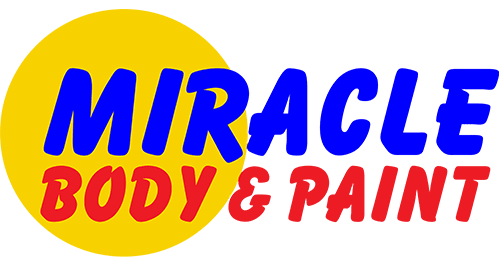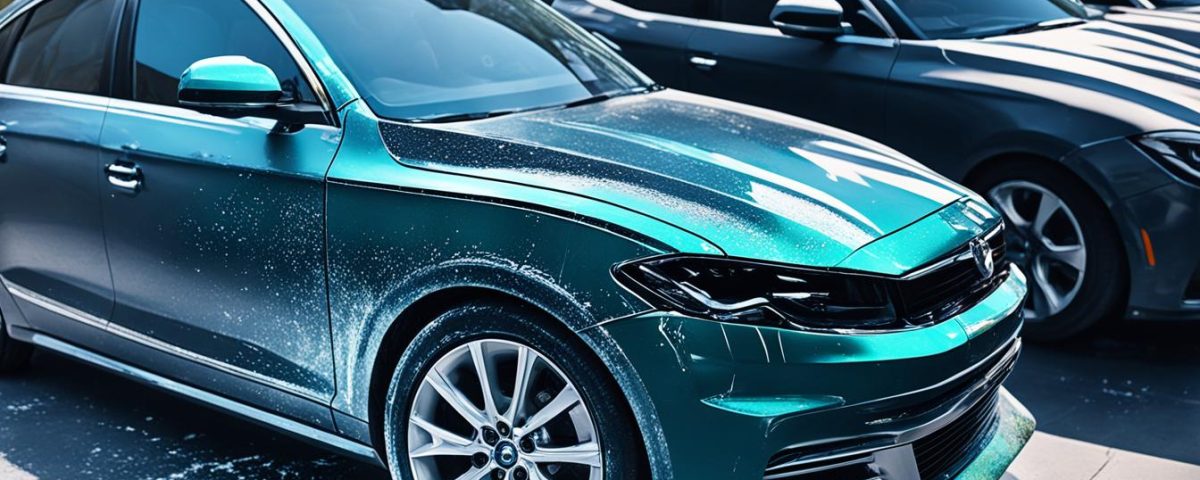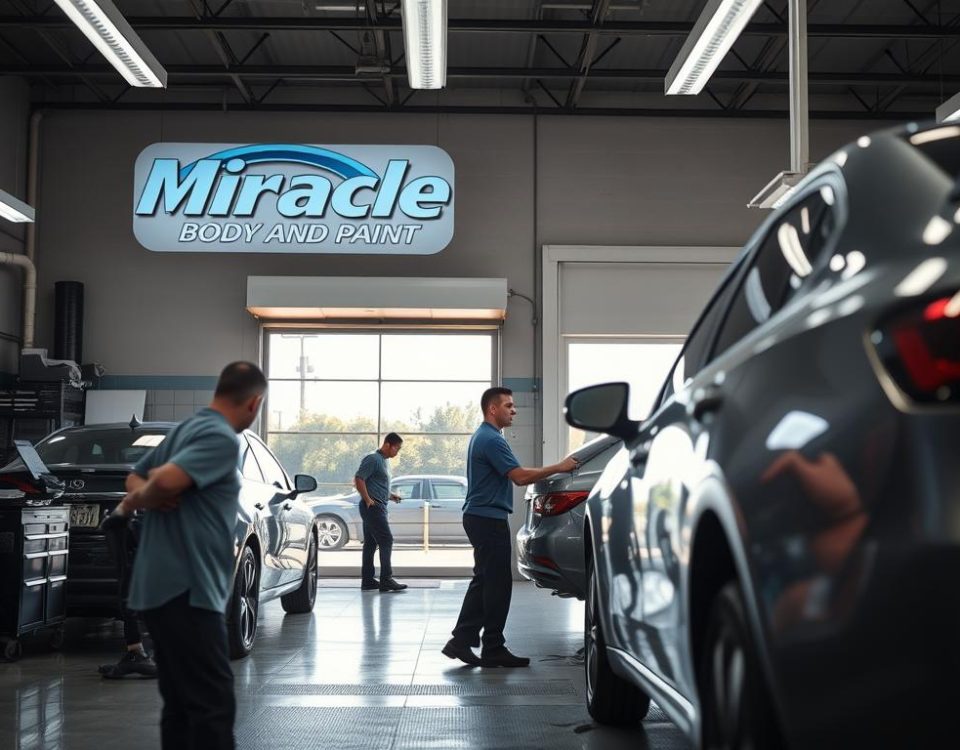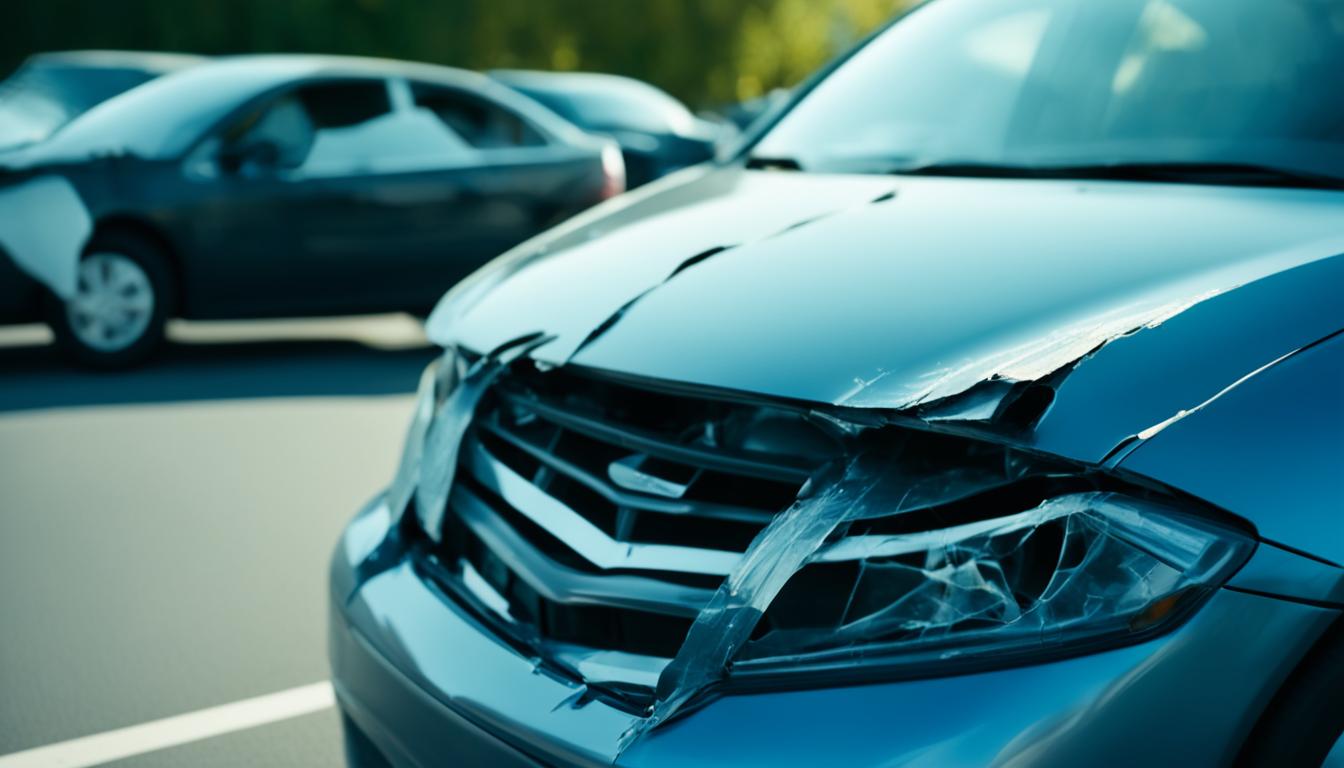
Common Types of Vehicle Damage and How They Are Repaired
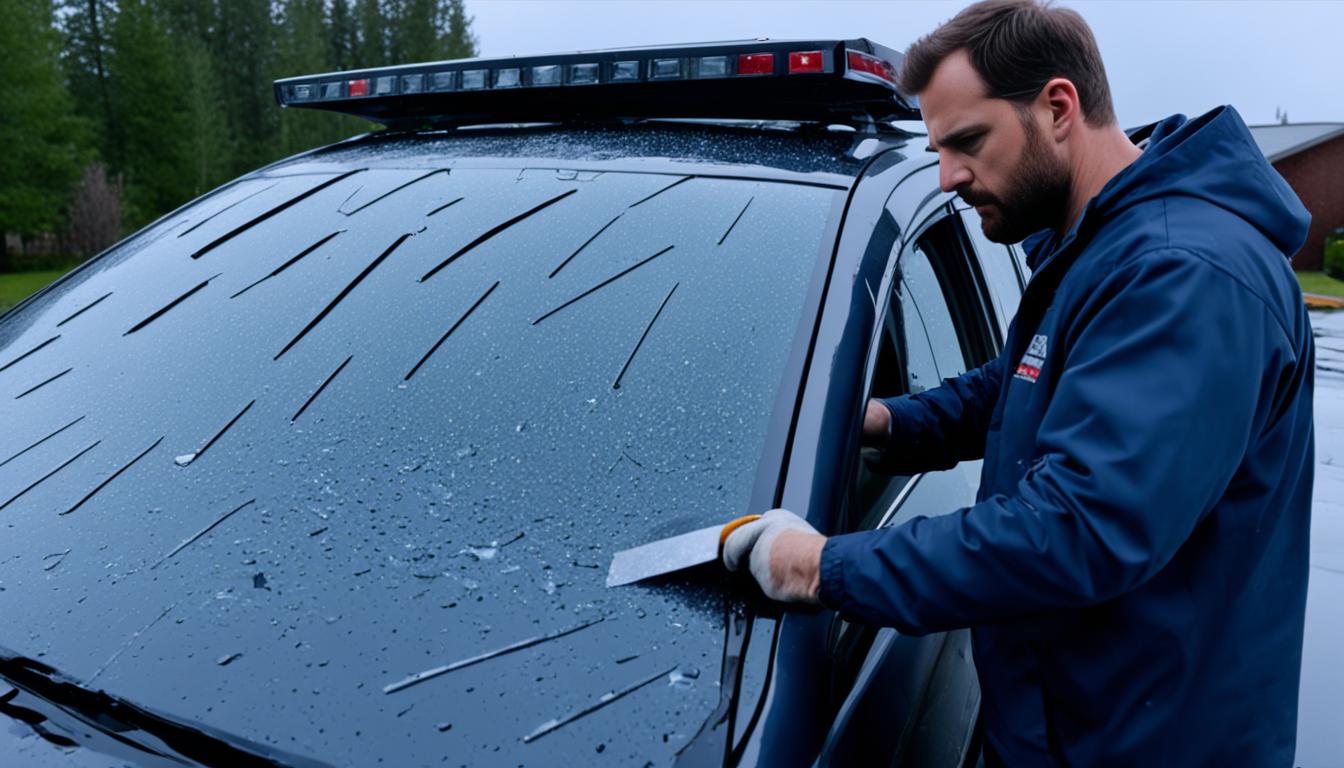
Effective Hail Damage Repair Solutions for Your Vehicle
When your car’s paint sustains damage from a collision, it can be disheartening to see the once-pristine finish marred by scratches, dents, or faded color. However, with the right knowledge and techniques, you can breathe new life into your vehicle’s appearance. In this comprehensive guide, we’ll explore the steps you can take to restore your car’s paint after a collision, ensuring it looks as good as new.
Key Takeaways
- Understand the common causes of faded car paint, such as sunlight, environmental factors, and acidic substances.
- Implement preventative measures like parking in covered areas and regular washing and waxing to protect your car’s paint.
- Learn the buffing process and tips for successful DIY paint restoration.
- Recognize when professional refinishing is necessary for more extensive damage.
- Consider the cost and insurance coverage options for car paint repair.
Understanding the Causes of Faded Car Paint
Maintaining a vibrant and well-preserved car paint is essential for preserving the vehicle’s aesthetic appeal and resale value. Unfortunately, numerous environmental factors can contribute to the fading and damage of a car’s paint over time. As car enthusiasts, we’ll explore the primary culprits behind this common issue and provide insights on how to mitigate their effects.
Sunlight and UV Rays
The number one enemy of car paint is the relentless exposure to sunlight and ultraviolet (UV) rays. These powerful rays can slowly break down the pigment in the paint, causing it to oxidize and fade over time. The intensity of the sun’s rays can vary depending on your geographic location, but the cumulative effect of consistent UV exposure is undeniable.
Road Salt and Environmental Factors
In regions that experience harsh winters, the use of road salt to melt ice and snow can wreak havoc on a car’s paint. The salt can not only fade the color but also contribute to rusting and other forms of paint damage. Additionally, environmental pollutants, such as acid rain and airborne particles, can also take a toll on the car’s exterior finish.
Bird Droppings and Acidic Substances
Another surprising culprit of car paint damage is bird droppings. These highly acidic substances can eat away at the car’s clear coat and paint if left unattended for too long. Similarly, other acidic substances, such as tree sap or debris, can also cause discoloration and etching if not promptly removed.
By understanding the primary causes of faded car paint, we can take proactive steps to protect our vehicles and maintain their showroom-like appearance for years to come. In the next section, we’ll explore preventative measures you can implement to safeguard your car’s precious paint.
Preventative Measures to Protect Your Car’s Paint
When it comes to preserving the vibrant appearance of your car’s paint, prevention is often the best approach. By taking a few simple steps, you can shield your vehicle from the elements and extend the life of its glossy finish.
Park in Covered Areas
One of the most effective ways to protect car paint is to park your car in a covered area, such as a garage or carport. This shields the paint from the sun’s damaging UV rays, which can cause fading and oxidation over time. Keeping your car out of direct sunlight can significantly slow down the deterioration of the paint.
Regular Washing and Waxing
Regularly car washing and car waxing are also essential for maintaining the integrity of your car’s paint. Washing your vehicle removes dirt, grime, and other contaminants that can scratch or dull the paint. Applying a high-quality car waxing product adds a protective layer that helps repel water, debris, and other environmental factors that could compromise the finish.
- Use the right products and techniques to avoid causing further damage to the paint.
- Wax your car every few months to keep the paint looking its best.
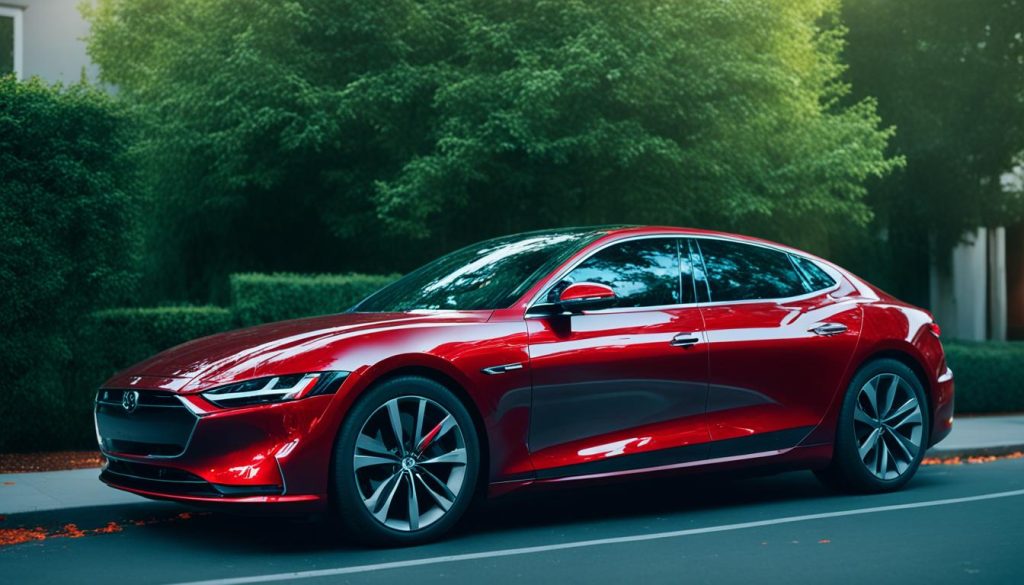
By combining covered parking with regular car washing and car waxing, you can effectively protect car paint and preserve the showroom-like appearance of your vehicle for years to come.
Car Paint Repair: Buffing and Refinishing
If your car’s paint has suffered from fading, scratches, or other damage, the good news is that it’s often possible to restore its shine and luster through a process called buffing. Buffing involves using specialized abrasive compounds and a high-quality buffer to gently remove microscopic imperfections and bring back the paint’s original vibrant appearance.
The Buffing Process
The key to successful buffing is to work in small, manageable sections, ensuring that you don’t overdo it and damage the underlying clear coat. Start with a medium-grit compound to remove any significant defects, then gradually transition to finer compounds to achieve a smooth, glossy finish. Be especially careful around body lines and edges, where the paint is more delicate.
Tips for Successful Buffing
- Invest in a quality dual-action or rotary buffer to ensure an even, consistent finish.
- Use high-quality, paint-safe buffing compounds specifically designed for car paint repair.
- Work in the shade or under cover to avoid the compound drying too quickly.
- Regularly clean your buffer pads to prevent the buildup of dirt and debris.
- Take your time and be gentle, especially on darker or metallic paint finishes.
However, if the damage to your car’s paint refinishing is too extensive, buffing may not be enough, and professional car paint repair services may be necessary to achieve the desired results.
When Professional Refinishing is Necessary
If your car’s paint has suffered significant damage from fading, scratches, or other forms of wear and tear, the buffing process may not be enough to restore it to its former glory. In such cases, professional car paint refinishing by a skilled collision repair technician may be the best solution.
At Miracle Body and Paint, our experienced team of collision repair experts can assess the condition of your car’s paint and determine the appropriate course of action. If the damage is too extensive for buffing, we may recommend a complete refinishing of the affected panels or even the entire vehicle.
The refinishing process involves carefully sanding down the existing paint, applying a new primer, and then meticulously spraying on a fresh coat of paint that perfectly matches the original color. This level of expertise and attention to detail is crucial for ensuring a flawless, long-lasting finish.
- Professional car paint refinishing is necessary when the existing paint is too faded or damaged for buffing to be effective.
- Skilled collision repair technicians can assess the extent of the damage and recommend the best course of action, whether it’s a partial or full refinishing.
- The refinishing process involves sanding, priming, and carefully applying a new coat of paint to restore the vehicle’s original appearance.
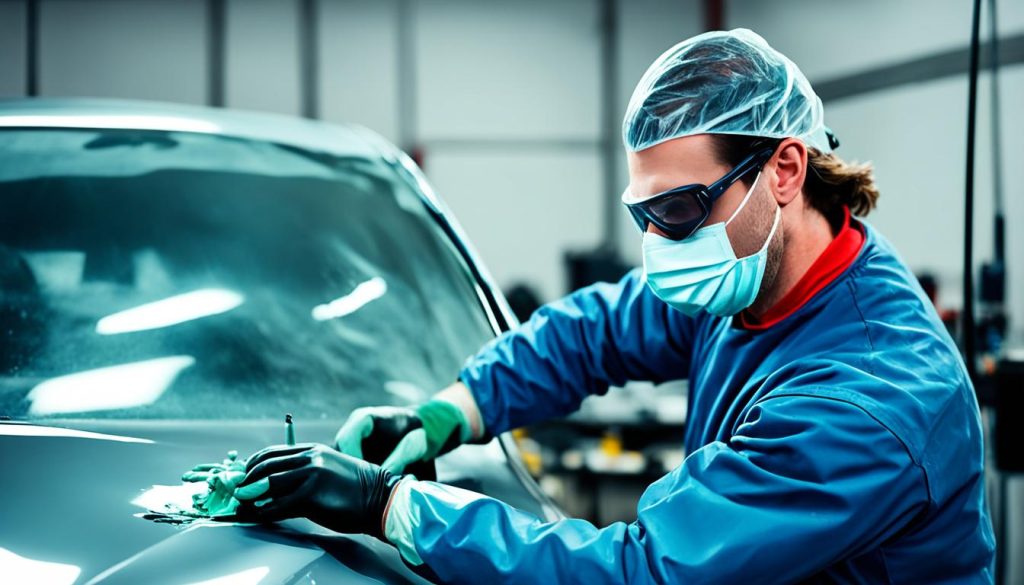
By entrusting your car’s professional car paint refinishing to the experts at Miracle Body and Paint, you can be confident that your vehicle will emerge with a freshly restored, showroom-quality finish that will turn heads wherever you go.
Car Paint Repair: Cost and Insurance Considerations
When it comes to restoring your car’s paint after a collision, the cost can be a significant concern. The good news is that car insurance can often cover the expenses, but understanding the nuances is crucial. Let’s explore the cost factors and insurance implications in detail.
The car paint repair cost can vary widely, ranging from as little as $100 to over $1,000 per panel, depending on the extent of the damage, the make and model of your vehicle, and the color of the paint. Minor touch-ups and scratch repairs may be on the lower end, while more extensive work, such as full panel refinishing, can quickly escalate the price.
Fortunately, if you have comprehensive or collision coverage on your car insurance policy, the cost of paint repair is often covered. This means that you can get your car’s paint restored without having to shoulder the entire burden. However, it’s important to note that insurance may not cover general wear and tear or damage that has occurred gradually over time.
To ensure you’re getting the most out of your car insurance coverage, it’s a good idea to review your policy and understand the specifics of your coverage. Knowing what is and isn’t covered can help you make informed decisions about the best course of action for restoring your car’s appearance.
In summary, the cost of car paint repair can vary significantly, but with the right insurance coverage, the financial burden can be greatly alleviated. By understanding the factors that influence the repair cost and the extent of your insurance coverage, you can make an informed decision and get your car back on the road looking its best.
Conclusion
In conclusion, restoring your car’s paint after a collision requires a combination of preventative measures, DIY buffing techniques, and professional refinishing when necessary. By understanding the causes of faded paint, such as sunlight, environmental factors, and acidic substances, we can take proactive steps to protect our vehicle’s finish.
Regular washing, waxing, and parking in covered areas can go a long way in preserving the appearance of our cars. When minor paint damage occurs, the buffing process can often be an effective solution, allowing us to bring back the shine and luster of our car’s paint. However, for more significant issues, seeking the expertise of a professional body shop, like Miracle Body and Paint, may be the best course of action.
By combining these strategies, we can restore our car’s paint to its former glory and maintain its value and appearance for years to come. Remember, Miracle Body and Paint is here to assist you with all your car paint repair needs, so you can feel confident in keeping your vehicle looking its best.
FAQ
What are the main causes of faded car paint?
How can we prevent our car’s paint from fading?
How do we restore faded car paint through buffing?
When is professional refinishing necessary for restoring car paint?
How much does car paint restoration typically cost, and what are the insurance considerations?
FAQ
What are the main causes of faded car paint?
The main causes of faded car paint are sunlight and UV rays, which can slowly break down the pigment in the paint and cause it to oxidize. Road salt used to melt ice and snow can also fade the paint and cause rusting. Additionally, bird droppings are highly acidic and can eat away at the car’s paint when left on the surface too long. The type of paint used and a lack of proper care can also contribute to fading.
How can we prevent our car’s paint from fading?
Prevention is key when it comes to preserving your car’s paint. Parking in a covered area, such as a garage or carport, can help protect the paint from sun damage. Regularly washing and waxing your vehicle can also extend the longevity of the paint by removing dirt and adding a protective layer. Using the right products and techniques when washing and waxing is important to avoid causing further damage.
How do we restore faded car paint through buffing?
If your car’s paint is already faded, you may be able to buff the shine back into the paint. This process involves using abrasive compounds and a quality buffer to remove micro dirt and restore the paint’s shine. Ensuring you have the right equipment, working in small sections, and being extra careful around edges and body lines are important tips for the buffing process.
When is professional refinishing necessary for restoring car paint?
If the car’s paint is too faded or damaged for the buffing process to work, the only other option is to refinish the vehicle, either just the affected panels or the entire car. In this case, it’s best to reach out to a skilled collision repair technician, such as those at Miracle Body and Paint, who can evaluate the condition of the car and determine the best course of action to restore the paint to its former condition.
How much does car paint restoration typically cost, and what are the insurance considerations?
The cost of paint restoration can vary widely, ranging from 0 to over
FAQ
What are the main causes of faded car paint?
The main causes of faded car paint are sunlight and UV rays, which can slowly break down the pigment in the paint and cause it to oxidize. Road salt used to melt ice and snow can also fade the paint and cause rusting. Additionally, bird droppings are highly acidic and can eat away at the car’s paint when left on the surface too long. The type of paint used and a lack of proper care can also contribute to fading.
How can we prevent our car’s paint from fading?
Prevention is key when it comes to preserving your car’s paint. Parking in a covered area, such as a garage or carport, can help protect the paint from sun damage. Regularly washing and waxing your vehicle can also extend the longevity of the paint by removing dirt and adding a protective layer. Using the right products and techniques when washing and waxing is important to avoid causing further damage.
How do we restore faded car paint through buffing?
If your car’s paint is already faded, you may be able to buff the shine back into the paint. This process involves using abrasive compounds and a quality buffer to remove micro dirt and restore the paint’s shine. Ensuring you have the right equipment, working in small sections, and being extra careful around edges and body lines are important tips for the buffing process.
When is professional refinishing necessary for restoring car paint?
If the car’s paint is too faded or damaged for the buffing process to work, the only other option is to refinish the vehicle, either just the affected panels or the entire car. In this case, it’s best to reach out to a skilled collision repair technician, such as those at Miracle Body and Paint, who can evaluate the condition of the car and determine the best course of action to restore the paint to its former condition.
How much does car paint restoration typically cost, and what are the insurance considerations?
The cost of paint restoration can vary widely, ranging from $100 to over $1,000 per panel, depending on the type and extent of the damage, as well as the make, model, and color of the vehicle. In many cases, car insurance will cover the cost of paint repair, especially if you have comprehensive or collision coverage. However, insurance may not cover general wear and tear or damage that has occurred over time.
,000 per panel, depending on the type and extent of the damage, as well as the make, model, and color of the vehicle. In many cases, car insurance will cover the cost of paint repair, especially if you have comprehensive or collision coverage. However, insurance may not cover general wear and tear or damage that has occurred over time.

